A recent survey reported that over 46 million Americans—19 percent of the U.S. adult population—practice some type of meditation. Health is the main reason people meditate, in hopes it will help with chronic pain, anxiety, depression, insomnia, and other problems.1

Dr. David Orme-Johnson, researcher on the TM technique
However, virtually all ancient traditions hold that the ultimate purpose of meditation is to gain enlightenment.2 In Buddhism, for example, this state is called Nirvana, which means a perfect state of happiness.
But there was no scientific research on what enlightenment is or how to achieve it until Maharishi Mahesh Yogi, the Founder of the Transcendental Meditation® (TM®) program, proposed scientific investigation into the results of TM practice after he had been teaching in the West for over a decade.
In this article I’ll explain what enlightenment is and how it develops, and describe how we began to study it in the laboratory at Maharishi European Research University in the early 1970s.
Virtually all ancient traditions hold that the ultimate purpose of meditation is to gain enlightenment.
The Goal of Enlightenment
Our story begins in 1959, when Maharishi gave his first lecture in the United States in San Francisco. He presented the TM technique as a path to enlightenment, but the next morning the newspaper described TM as a “Non-Medicinal Tranquilizer” and cure for insomnia.
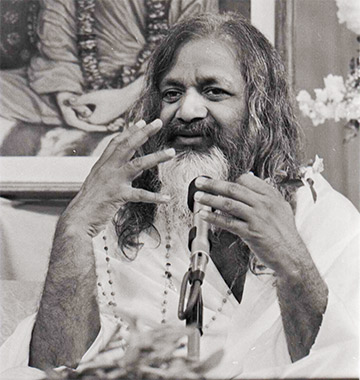
Maharishi Mahesh Yogi giving a lecture at a TM Teacher Training Course in 1971
Maharishi was surprised they did not mention enlightenment, but said: “The thing is—for whatever reason people may start Transcendental Meditation, they are going to get the total effect it produces, and the goal that they will arrive at will be full enlightenment.”3
Maharishi went on to teach the TM technique worldwide, training thousands of TM teachers and setting up TM Centers in almost every country.
On the first day of the TM course, which is taught in the same way everywhere, students learn the TM technique from a certified teacher during personal instruction. Then, on three consecutive days of group instruction, they learn the basics of correct practice, the mechanics of release of stress, and on the last day, the goal of enlightenment, a state Maharishi calls Cosmic Consciousness.
The basic premise is that, by alternating regular experience of Transcendental Consciousness during TM with daily activity, the nervous system becomes habituated to experience Transcendental Consciousness outside of meditation, during waking activity, dreaming, and even sleep. This explanation of Cosmic Consciousness guided our research on it.
“For whatever reason people may start Transcendental Meditation, they are going to get the total effect it produces, and the goal that they will arrive at will be full enlightenment.” —Maharishi
Transcendental Consciousness, a Fourth Major State of Consciousness
The first step is to learn to transcend. The Transcendental Meditation technique takes the mind from active levels to the completely silent level of unbounded awareness, called Transcendental Consciousness.
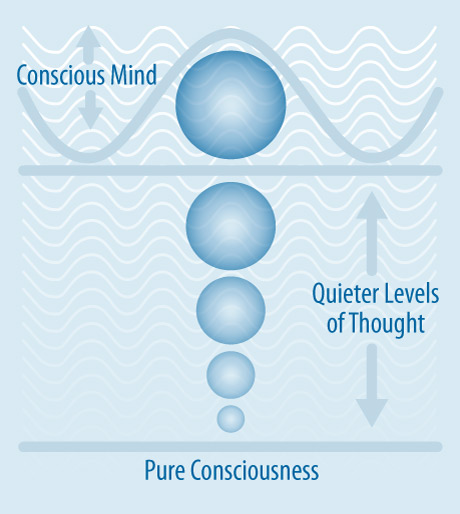
The TM technique allows the mind to settle down and experience Transcendental Consciousness
In the first three articles in this series (1, 2, 3) on the scientific quest for enlightenment, I reviewed the scientific evidence that Transcendental Consciousness produces a unique physiological pattern. The characteristic spontaneous slowing of breathing and increased synchrony and coherence of the EEG brain waves distinguishes it from waking, dreaming, and sleep, thus defining it as a fourth state of consciousness.
Maharishi views Transcendental Consciousness as the direct experience of the all-pervading field of pure consciousness, which is also the transcendental basis of the universe. This worldview occurs throughout history in every major culture.2
The all-pervading field of pure consciousness is the Tao of Taoism, Being in pre-Socratic philosophy, the Good of Plato, the Kingdom of Heaven within of Christianity, the Atma of the Vedic Tradition of India, and the Self of all beings and things or Oversoul for the American Transcendentalists Emerson, Thoreau, and Whitman.4 It has been called the Perennial Philosophy by Aldous Huxley.5
Philosopher Jonathan Shear has argued that the consistent descriptions of Transcendental Consciousness across cultures as a state of no sensory experience during a self-effulgent inner awareness constitutes empirical evidence of the reality of Transcendental Consciousness.6 If everyone is describing it the same way, maybe it is real, not just a “mystical experience.”
With the availability of the Transcendental Meditation technique to reliably produce the experience of Transcendental Consciousness, it entered into the laboratory for study and metaphysics shook hands with physics.
Maharishi views Transcendental Consciousness as the direct experience of the all-pervading field of pure consciousness, which is also the transcendental basis of the universe.
The Rise of Cosmic Consciousness, the Fifth State: Habituation of the Nervous System to Maintain Transcendental Consciousness during Waking, Dreaming, and Sleep
After we practice the TM technique, returning back into activity once again challenges the system to function with a new level of more stress-free functioning. Regular twice-a-day meditation alternated with daily activity progressively habituates the nervous system to maintain Transcendental Consciousness, the fourth state, along with waking, dreaming, and sleep. This gives rise to the development of a fifth state of consciousness, called Cosmic Consciousness.
In Maharishi’s view, the human nervous system reflects and localizes universal pure consciousness as an individual mind. As the individual nervous system becomes increasingly purified through regular TM practice, it is able to reflect universal consciousness more and more clearly.

As the nervous system is purified of stress through regular TM practice, it reflects universal consciousness more clearly
Maharishi explains this process with an analogy. A glass of green water reflects colorless white light as green. But as the water becomes increasingly purified and clear, it reflects the white light more and more perfectly. Eventually, the process of purification reaches a point in which the reflection is a perfect replica of the original.
The rise of awareness of universal consciousness, the Self, deep within one’s own awareness, begins to shift our individual identity to the awareness that “I am essentially the Self,” with a large S—a cosmic being.
In Cosmic Consciousness, our personal identity is still defined by attributes such as gender, ethnicity, family, nationality, education, and abilities. But these attributes take on a secondary importance compared to the inner realization of our identification with our cosmic Self.
Regular twice-a-day meditation alternated with daily activity progressively habituates the nervous system to maintain Transcendental Consciousness, the fourth state, along with waking, dreaming, and sleep.
Release of Stress and Normalization of the Nervous System
Maharishi explains that Cosmic Consciousness arises spontaneously and naturally when the nervous system becomes sufficiently stress-free and is functioning normally. This upends the prevalent view of enlightenment, that if it exists at all, it is extremely rare and special. It may be rare, but only because humanity has been operating in a highly stressed, less than normal state.
“Cosmic Consciousness should not be considered as something far beyond the reach of normal man,” Maharishi said. “The state of Cosmic Consciousness should be the state of normal human consciousness. Any state below Cosmic Consciousness can only be taken to be subnormal human consciousness. The human mind should be a cosmically conscious mind.”7
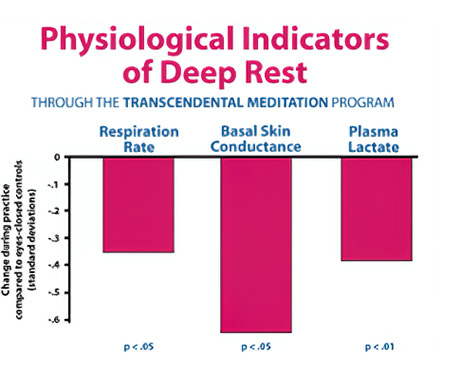
A meta-analysis of all available physiological research on the TM technique found that the practice of TM produces a state of deep rest compared to control conditions. (Source: Dillbeck, M.C., Orme-Johnson, D.W. “Physiological Differences between Transcendental Meditation and Rest.” American Psychologist 42(9): 879-881, 1987.)
The process of stress release and normalization of the nervous system is thus the most important factor in the rise to Cosmic Consciousness. The TM technique produces a unique style of restful alertness, a state in which the body and mind can self-repair.
During sleep and dreaming, the body repairs damage and recovers from the fatigue and stresses of the day, refreshing us for the activity of the new day. The mechanisms of physiological restoration involve innumerable feedback loops that detect imbalances and initiate the repair process.
What TM practice adds to the normal cycle of rest and activity is a unique style of coherent rest: restful alertness.
During the TM technique, the brain becomes highly coherent: All the different areas of the brain are in heightened communication with each other. This appears to facilitate the self-repair process beyond what happens during sleep and dreaming.
“Cosmic Consciousness should not be considered as something far beyond the reach of normal man. The state of Cosmic Consciousness should be the state of normal human consciousness.” —Maharishi
Research Provides Evidence of Global Self-Repair from the TM Technique
The research on TM practice supports this conclusion. Studies have found that when people add the TM technique to their daily routine, it reduces hospitalization rates in all categories of disease.8,9 “All categories” indicates that the effects of TM practice are global.
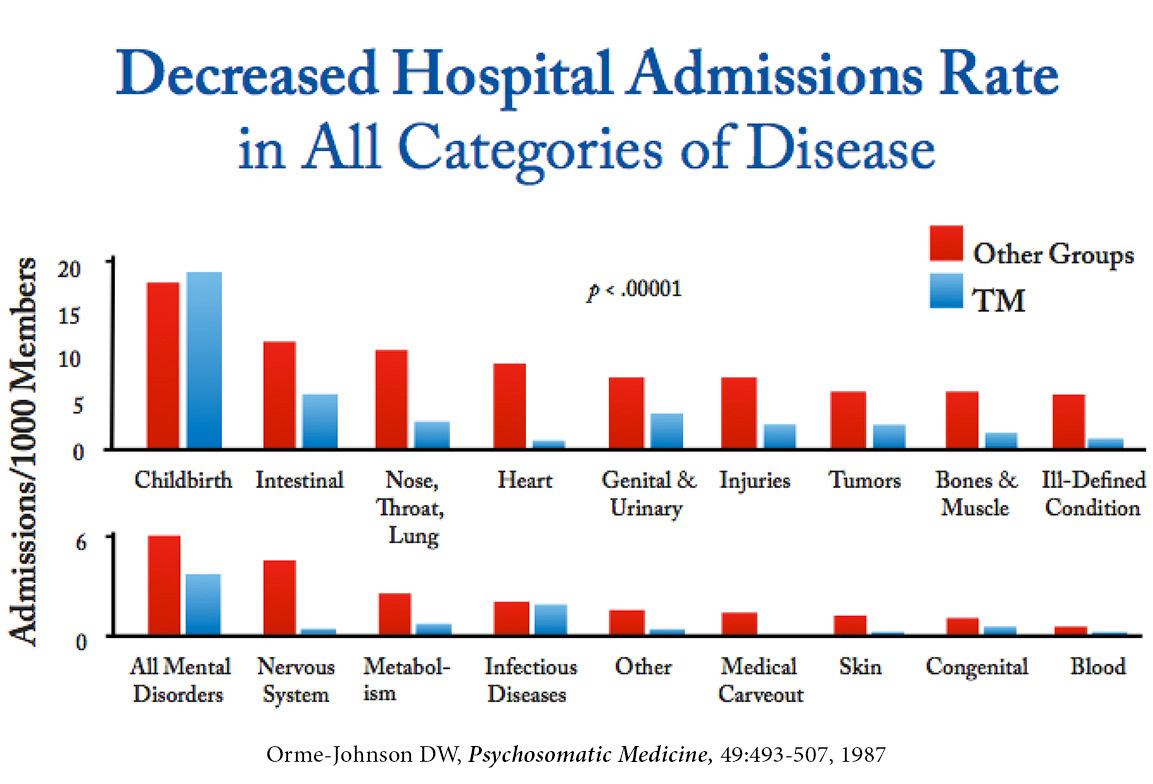 The type of rest gained during TM facilitates self-repair across a wide range of disorders that are very different from each other. This includes serious conditions that are difficult to treat, such as blockage of carotid arteries.10,11,12 Regular TM practice also makes people more resilient, for example, by reducing heart attacks, strokes, and death in coronary heart patients.13
The type of rest gained during TM facilitates self-repair across a wide range of disorders that are very different from each other. This includes serious conditions that are difficult to treat, such as blockage of carotid arteries.10,11,12 Regular TM practice also makes people more resilient, for example, by reducing heart attacks, strokes, and death in coronary heart patients.13
In other words, the TM technique provides a kind of “super rest” in which the many self-repair mechanisms of the body are able to do their job better than they can without TM.
Post-Traumatic Stress Disorder (PTSD) is arguably our most serious stress-related condition and is very challenging to treat, with approximately 8 million Americans experiencing it in a given year. Studies have shown that the TM technique is very effective in reducing PTSD symptoms in a wide range of populations, including war veterans,14–19 war refugees,20,21 prison inmates,22,23 and college students.24
The TM technique has also been shown to reduce insomnia, and dreams become more peaceful, indicating that it is improving the effectiveness of these modes of rest for normalizing the body as well.
In fact, all 700 studies on the TM technique can be interpreted as showing that TM is highly effective in reducing stress, which supports our hypothesis that TM has global effects on normalizing the entire physiology.
The TM technique provides a kind of “super rest” in which the many self-repair mechanisms of the body are able to do their job better than they can without TM.
“Witnessing,” or Peak Experiences—the Hallmark of Rising Cosmic Consciousness
Having seen that TM practice does make life better in many ways, let’s now turn to a study of people who are beginning to experience Transcendental Consciousness during the different phases of waking, dreaming, and sleep. These experiences—a phenomenon called “witnessing”—are the hallmark of rising Cosmic Consciousness.

“Witnessing” is being in the flow of experience, which many athletes, artists, writers, and others have spoken about
Witnessing is the awareness of the Self deep within the mind as if watching one’s activities, but completely uninvolved with them. There are many examples of athletes, writers, musicians, joggers, and many others who report peak experiences during which they are as if watching themselves effortlessly and spontaneously play their perfect game,25,26 write their most subline poem,27 compose their most famous symphony, or give their best performance.2 This is the experience studied by psychologist Abraham Maslow, of being in the zone, the flow experience.28
To give just one example here, the following is part of how Roger Bannister—the first man to run a mile in under 4 minutes—describes how he felt during his famous race of 1954:
“I was relaxing so much that my mind seemed almost detached from my body. There was no strain… My mind took over. It raced well ahead of my body and drew my body compellingly forward. I felt that the moment of a life time had come. There was no pain, only a great unity of movement and aim. The world seemed to stand still, or did not exist…”2
Although such peak experiences are well known and sought after, Maharishi provided a systematic understanding of what they are in the context of the full range of human evolution: They are a taste of enlightenment.
Experience and research show that the TM technique is a systematic way to develop enlightenment. Practicing TM regularly increases the frequency of such experiences. And as we will see in later articles in this series, peak performers have the brain physiology associated with Cosmic Consciousness, and the TM technique develops that physiology.
Whether or not you have clear experiences of Transcendental Consciousness or witnessing, Cosmic Consciousness is growing in your life as long as you are meditating regularly. Enlightenment depends on the normalization of the nervous system and the dissolution of stress, and whenever we practice TM— especially when we do so twice a day—stresses are being normalized.
Have you had experiences of transcending during your TM practice or growing experiences of Cosmic Consciousness in your life that you would like to share? We are collecting written experiences from TM Meditators around the world and would like to include yours. Please note: We never share any information without your expressed permission. Please leave a Comment at the end of this article, and we’ll contact you.
“I was relaxing so much that my mind seemed almost detached from my body. There was no strain… My mind took over.” —Roger Bannister, on running the first 4-minute mile
Research Hypothesis: Subjects Experiencing Witnessing More Frequently Will Have Higher Levels of EEG Coherence
As scientists and researchers at Maharishi European Research University (MERU) in the 1970s, we got our first glimpse of the physiology of Cosmic Consciousness. If Cosmic Consciousness is the stabilization of Transcendental Consciousness, we reasoned, then people having more frequent experiences of witnessing should show higher levels of EEG coherence, a key indicator of Transcendental Consciousness, both during TM practice and after, sitting with eyes closed.
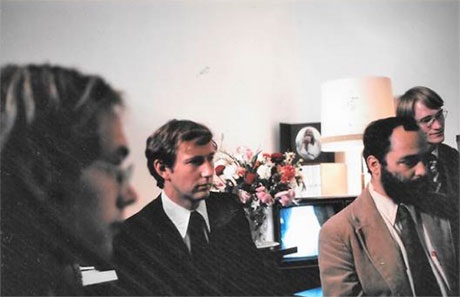
Drs. Keith Wallace, David W. Orme-Johnson, Paul Levine, and Chris Haynes in a meeting with Maharishi discussing the research at MERU in Switzerland around 1974
To assess the degree of experience of Cosmic Consciousness, we asked our subjects to describe in writing how frequently they experienced witnessing during waking activity, dreaming, or sleep.
Witnessing sleep is described as a continuous inner glow of awareness of the body as it settles down, falls sleep, and then wakes up again. It is not insomnia, which is full of thoughts, images, feelings, and perhaps agitation, but is a very quiet and settled state, often blissful in nature.
Our subjects were well aware of what witnessing was, having heard many discussions of experiences of it with Maharishi and the other course participants.
To create a scale of witnessing experiences, we took witnessing during sleep as the most stringent criterion of rising Cosmic Consciousness, because sleep, as the state of no awareness, poses the greatest challenge to maintaining inner awareness.
Our Cosmic Consciousness scale, therefore, ranked subjects’ experiences according to the frequency and duration that they witnessed sleep.
Our subjects were 22 males who were on an advanced course for TM teachers in Switzerland, where MERU was located. They ranged in age from 20 to 36, and they had been practicing the TM technique an average of 57 months.
Witnessing sleep is described as a continuous inner glow of awareness of the body as it settles down, falls sleep, and then wakes up again. It is not insomnia… but is a very quiet and settled state, often blissful in nature.
Because of the limited capacity of computers in the early 1970s, it was only practical to collect and analyze data from four EEG leads, which are attached to the scalp. It took all night to compute the coherence for one session with one subject, which included TM practice as well as the time before and after with eyes close. Today’s computers, on the other hand, can collect and compute coherence on 20 channels simultaneously in real time.
So Many Questions to Ask about Cosmic Consciousness!
We had a number of questions we were trying to answer. Was Cosmic Consciousness related to how well the left and right sides of the brain worked together? We calculated coherence between the left and right lobes of the cerebral cortex in the frontal and central leads. Much research has shown that these areas of the brain have different functions: The left is verbal, the talker and writer, while the right is spatial, the artist and seer of holistic patterns.
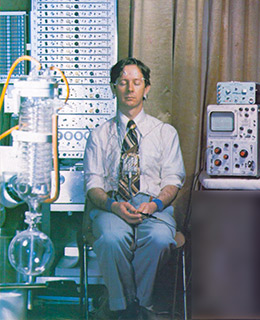
One of the subjects in the EEG laboratory at Maharishi European Research University
Does Cosmic Consciousness reflect a more abstract level of awareness that is the integration of the left and right modes of thinking? Was the frontal area more important than the central area of the cortex? We also calculated coherence within each hemisphere from the frontal to the central leads. Was the coherence within the left or right sides of the brain important in Cosmic Consciousness?
We were casting a wide net and looking for clues.
We measured the EEG during TM practice and in the rest periods before and after it, and we found it to be over .95, just a bit less than perfect coherence, which is 1.0.
Neurophysiologists consider coherence this high (.95+) to indicate a state of maximum coupling between brain areas, which allows efficient transmission of sensory information29 for a number of purposes: for performance of motor activity,30 for visual-tactile integration,31 for memory and many other tasks.32,33
We speculated that high coherence indicates a state of unobstructed information exchange or “flow of intelligence.” Such high mind-body coordination suggested a highly correlated and efficient level of neurophysiological functioning.34
Our subjects reported a range of experiences of witnessing, from those who said they never experienced it, to others who said it happened occasionally, and a few who experienced it almost all the time.
Our goal was to determine if the degree of self-reported subjective experiences of Cosmic Consciousness was related to the degree of a neurophysiological correlate of Transcendental Consciousness—EEG coherence—as predicted by our hypothesis.
Neurophysiologists consider coherence this high (.95+) to indicate a state of maximum coupling between brain areas, which allows efficient transmission of sensory information for performance of motor activity, for visual-tactile integration, for memory and many other tasks.
Eureka! Experiences of Witnessing Are Correlated with EEG Coherence
Indeed, we found that the frequency of witnessing sleep was significantly correlated with the alpha (8-12 Hz) EEG coherence. This was expected, because alpha has consistently been found to be the EEG signature of the TM technique. We believed that subjects who had stabilized Transcendental Consciousness in the rise to Cosmic Consciousness should have higher levels of alpha, and they did.
But wait, there’s more. As described in an earlier article, research on the specific period of Transcendental Consciousness during TM practice was associated with EEG coherence across a broad range of frequencies. In this experiment we found that the degree of witnessing was also correlated with EEG coherence in other frequency bands, theta (4-8 Hz) and beta (12-25 Hz) EEG, as shown in the chart.34

The frequency of witnessing was correlated with EEG coherence in all three frequency bands: theta (4-8 Hz), alpha (8-12 Hz), and beta (12-25 Hz). (Source: D.W. Orme-Johnson et al, “Higher states of consciousness: EEG coherence, creativity, and experiences of the Sidhis.” Scientific Research on the Transcendental Meditation program: Collected Papers Vol. 1, Rheinweiler, Germany: MERU Press, 1977.)
The significance of this is that different EEG frequency bands have different functional significances. The slower frequencies of alpha and theta enhance communication among cortical areas needed for creativity, memory, and other higher cognitive functions. Beta enhances communication among cortical areas that are near to each other, which is needed for highly focused activity.
High broad coherence during Transcendental Consciousness—the deepest phase of meditation, with respiratory suspension and no thoughts—indicates that the brain is in a highly organized but non-active state, not doing anything but ready to support any kind of activity.
This correlates with how Maharishi describes the Transcendent as a field of all possibilities. The correlation of global EEG coherence with developing experiences of Cosmic Consciousness, as seen in the chart, suggests that the brain is this field of all possibilities, and that outside of meditation, it is supporting whatever direction of action the person may take.
High broad coherence during Transcendental Consciousness—the deepest phase of meditation, with respiratory suspension and no thoughts—indicates that the brain is in a highly organized but non-active state, not doing anything but ready to support any kind of activity.
Cosmic Consciousness = Greater Creativity
In our studies at MERU, we also found that frequency of witnessing sleep was significantly correlated with scores on a standard creativity test (Torrance Test of Creative Thinking). Those who had the most established Cosmic Consciousness experiences were also the most creative.34 This indicates the practical significance of gaining enlightenment.
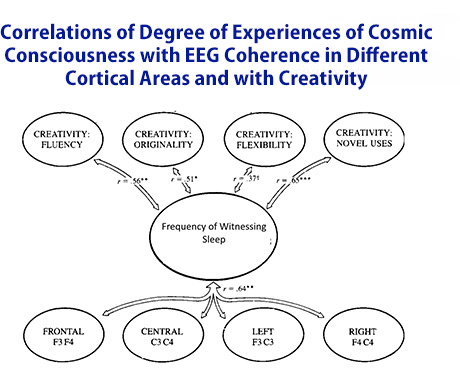
Subjects with more stabilized Cosmic Consciousness experiences were more creative, with higher scores on the Torrance Test of Creative Thinking. (Source: D.W. Orme-Johnson et al, “Higher states of consciousness: EEG coherence, creativity, and experiences of the Sidhis.” Scientific Research on the Transcendental Meditation program: Collected Papers Vol. 1, Rheinweiler, Germany: MERU Press, 1977.)
The bottom of the chart shows that alpha coherence in different cortical areas are jointly correlated with frequency of witnessing sleep, the measure of Cosmic Consciousness.
The top of the chart shows how frequency of witnessing is also correlated with performance on different aspects of creativity. This indicates that those subjects with more stabilized Cosmic Consciousness experiences were more creative.
The Torrance Test of Creative Thinking measures Fluency (number of ideas), Originality (how original ideas are), Flexibility (ability to come up with ideas from unrelated areas), and Novel Uses (number of uses for a common object, such as a brick).
Those who had the most established Cosmic Consciousness experiences were also the most creative. This indicates the practical significance of gaining enlightenment.
Does practicing the TM technique also increase EEG coherence longitudinally as a trait over time? We could not yet answer that question with our MERU studies, but groundbreaking research at the beginning of the 1980s brought out important new data.
Evidence for Rising Cosmic Consciousness in First Longitudinal Study
In 1981, Michael Dillbeck, Ph.D., was the first to provide longitudinal evidence that TM practice increases indications of rising Cosmic Consciousness.
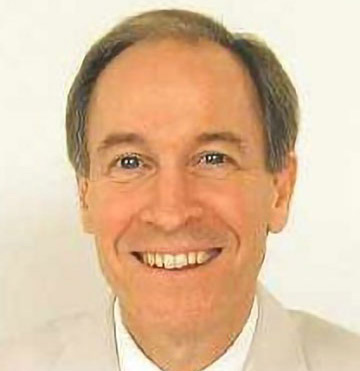
Michael C. Dillbeck, Ph.D.
He and a colleague found that regular TM practice increases alpha EEG coherence outside of meditation in just two weeks.35 This finding is highly significant evidence for Cosmic Consciousness.
It indicates that the TM technique habituates the nervous system to maintain a major physiological indicator of Transcendental Consciousness, alpha coherence, not only during TM practice as a state change, but also longitudinally in how the nervous system functions outside of meditation as a new style of more orderly brain functioning.
The study by Dr. Dillbeck found subjects instructed in the TM technique displayed a significant increase in frontal alpha EEG coherence over a 0.95 threshold during a two-week period, relative to levels during relaxation before learning the TM technique.
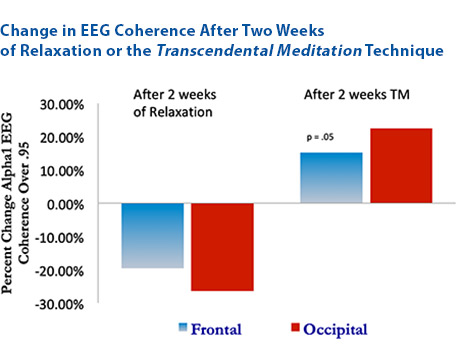
Subjects instructed in the TM technique displayed a significant increase in frontal alpha EEG coherence over a 0.95 threshold during a two-week period. Subjects practicing simple relaxation showed a decline in alpha coherence. (Source: M.C. Dillbeck, Bronson E.C. “Short-term longitudinal effects of the Transcendental Meditation technique on EEG power and coherence.” International Journal of Neuroscience 14 (1981): 147-151.)
The observed decrease in alpha coherence after two weeks of relaxation may indicate increased drowsiness, a well-known effect.
Dr. Dillbeck also found that the TM technique did not significantly change alpha EEG power, which is the amplitude of the EEG waves squared, or how tall the waves look.
This indicates that the dawning of Cosmic Consciousness is not based only on the presence of alpha but on its coherence: The alpha waves in different brain areas have to be in synchrony with each other—or coherent—to give rise to enlightenment.
The TM technique habituates the nervous system to maintain a major physiological indicator of Transcendental Consciousness, alpha coherence, not only during TM practice as a state change, but also… outside of meditation as a new style of more orderly brain functioning.
Enlightenment Is the Natural Condition of Humanity
In this article we describe how regular practice of TM normalizes stresses in the physiology. This not only has enormous practical benefits for reducing stress-related disorders, it also develops a style of more orderly brain functioning that is associated with classical experiences of Cosmic Consciousness—just as Maharishi said in his very first U.S. lecture in 1959.
Enlightenment is the natural condition of humanity, arising from the normal functioning of the nervous system. The mechanisms of gaining enlightenment are built into our body’s intrinsic rest and activity cycles, in which the body self-repairs during rest and stabilizes its gains during activity.

Regular practice of the TM technique normalizes the nervous system to support Cosmic Consciousness
Practicing the TM technique adds a unique and much needed style of restful alertness to the mix. This addition greatly accelerates the normalization of stress, as indicated by research showing global improvements in all the different systems of the body and mind.
Our research at MERU shows that classical experiences of Cosmic Consciousness, called witnessing—an uninvolved inner awareness during activity, dreaming, and even sleep—are associated with global EEG coherence. This indicates that enlightenment naturally arises from increased orderliness of brain functioning.
Our research further indicates that the Transcendental Meditation technique develops EEG coherence, showing that we are on the way to Cosmic Consciousness, whether we are aware of it or not.
Stay tuned for the next installment in the story of this exciting and historic research on enlightenment. It continued to unfold with studies of brain functioning in people who were having established experiences of Cosmic Consciousness during night sleep and dynamic activity. Two of our brilliant graduate students at Maharishi International University undertook that research: Dr. Lynne Mason and Dr. Fred Travis.
Enlightenment is the natural condition of humanity, arising from the normal functioning of the nervous system.
Have you had experiences of transcending during your TM practice or growing experiences of Cosmic Consciousness in your life that you would like to share? We are collecting written experiences from TM Meditators around the world and would like to include yours. Please note: We never share any information without your expressed permission. Please leave a Comment at the end of this article, and we’ll contact you.
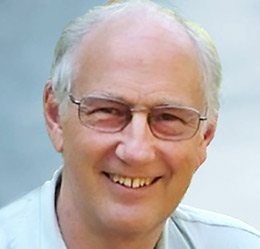
David Orme-Johnson, Ph.D., is one of the principal researchers on the Transcendental Meditation technique worldwide, with over 100 publications in peer-reviewed journals. He served as Director of Research of the International Center for Scientific Research, and Vice Chancellor of Maharishi European Research University. At Maharishi International University, Dr. Orme-Johnson was Head of the Psychology Department, Director of the Doctoral Program in Psychology, Co-Director of the Ph.D. program in the Physiology of Human Consciousness, and Dean of Research.
References
1. J. Macinko, Upchurch D. M. “Factors associated with the use of meditation, U.S. adults 2017.” The Journal of Alternative and Complementary Medicine 00, no. 00 (2019): 1-8.
2. C. Pearson. Supreme Awakening: Experiences of Higher States of Consciousness Across Time and Across the World. Fairfield, Iowa 52557 USA: Maharishi University of Management Press, 2012.
3. Maharishi Mahesh Yogi. Thirty Years Around the World: Dawn of the Age of Enlightenment. Vol. One 1957-1964. The Netherlands: Maharishi Vedic University Press, 1986.
4. S. Anderson. “Whitman, Transcendentalism and the American dream.” In Consciousness-Based Education: A Foundation for Teaching and Learning in the Academic Disciplines, edited by Volume Editor TF, Managing Editor DL, Executive Editor CP, 299-636. Fairfield, Iowa, 57557: Consciousness-Based Books, 2010.
5. A. Huxley. The Perennial Philosophy, Harper Perennial Modern Classics. New York: Harper Collins Publishers, 1944/2009.
6. J. Shear. “On mystical experiences as empirical support for the perennial philosophy.” Journal of the American Academy of Religion LXII, no. 2 (1994): 319-342.
7. Maharishi Mahesh Yogi. The Science of Being and the Art of Living. New York: New American Library Inc., 1963.
8. D. W. Orme-Johnson. “Medical care utilization and the Transcendental Meditation program.” Psychosomatic Medicine 49 (1987): 493-507.
9. D. W. Orme-Johnson, Herron R. “Medical care utilization, Transcendental Meditation, and Maharishi Ayur-Ved.” American Journal of Health Promotion, 4th Annual Conference, Health Promotion: What’s the Impact and What Works? (1993).
10. A. Castillo-Richmond, Schneider R. H., Alexander C. N., et al. “Effects of stress reduction on carotid atherosclerosis in hypertensive African Americans.” Stroke 31 (2000): 568-573.
11. A. Castillo-Richmond, Schneider R. S., Alexander C., et al. “Effects of the Transcendental Meditation Program on carotid atherosclerosis (abstract).” Ethnicity and Disease 8, no. 2 (1998): 287.
12. K. G. Walton, Olshansky B., Helene E., Schneider R. H. “Trials of Maharishi Ayurveda for cardiovascular disease: A pooled analysis of outcome studies with carotid intima-media thickness.” Journal of Preventive Cardiology 4, no. 1 (2014): 615-623.
13. R. H. Schneider, Grim C. E., Rainforth M. A., et al. “Stress reduction in the secondary prevention of cardiovascular disease: Randomized controlled trial of Transcendental Meditation and health education in Blacks.” Circulation: Cardiovascular Quality Outcomes 5, no. 6 (2012): 750-758.
14. S. Nidich, Mills P. J., Rainforth M., et al. “Non-trauma-focused meditation versus exposure therapy in veterans with post-traumatic stress disorder: a randomised controlled trial.” The Lancet Psychiatry 5, no. 12 (2018): 975-986.
15. K. L. Heffner, Crean H. F., Kemp J. E. “Meditation programs for veterans with posttraumatic stress disorder: Aggregate findings from a multi-site evaluation.” Psychol Trauma 8, no. 3 (2016): 365-374.
16. J. S. Brooks, Scarano T. “Transcendental Meditation and the treatment of post-Vietnam adjustment.” Journal of Counseling and Development 64 (1985): 212-215.
17. S. S. Kang, Erbes C. R., Lamberty G. J., et al. “Transcendental meditation for veterans with post-traumatic stress disorder.” Psychol Trauma 10, no. 6 (2018): 675-680.
18. R. E. Herron, Rees B. “The Transcendental Meditation Program’s Impact on the Symptoms of Post-traumatic Stress Disorder of Veterans: An Uncontrolled Pilot Study.” Mil Med 183, no. 1-2 (2017): e144-e150.
19. J. Rosenthal, Grosswald S., Ross R., Rosenthal N. “Effects of Transcendental Meditation (TM) in Veterans of Operation Enduring Freedom (OEF) and Operation Iraqi Freedom (OIF) with Posttraumatic Stress Disorder (PTSD): a Pilot Study.” Military Medicine 176, no. 6 (2011): 626.
20. B. Rees, Travis F., Shapiro D., Chant R. “Reduction in post traumatic stress symptoms in Congolese refugees practicing Transcendental Meditation.” Journal of Traumatic Stress 26 (2013): 295-298.
21. B. Rees, Travis F., Shapiro D., Chant R. “Significant reductions in posttraumatic stress symptoms in Congolese refugees within 10 days of Transcendental Meditation practice.” J Trauma Stress 27, no. 1 (2014): 112-115.
22. S. Nidich, O’Connor T., Rutledge T., et al. “Reduced Trauma Symptoms and Perceived Stress in Male Prison Inmates through the Transcendental Meditation Program: A Randomized Controlled Trial.” Perm J 20, no. 4 (2016): 43-47.
23. S. Nidich, Seng A., Compton B., et al. “Transcendental Meditation and Reduced Trauma Symptoms in Female Inmates: A Randomized Controlled Study.” Perm J 21 (2017).
24. C. L. Bandy, Dillbeck M. C., Sezibera V., et al. “Reduction of PTSD in South African university students using Transcendental Meditation practice.” Psychological Reports 0, no. 0 (2019): 1–16.
25. M. Murphy. The Psychic Side of Sports: Addison-Wesley, 1978.
26. H. Harung, Travis F. Excellence through Mind-Brain Development: The Secrets of World-Class Performers: A Grower Book.
27. R. F. Orme-Johnson. “A unified field theory of literature.” Modern Science and Vedic Science 1, no. 3 (1987): 322-373.
28. M. Csikszentmihályi. Flow: The Psychology of Optimal Experience. New York, NY: Harper & Row, 1990.
29. W. D. Sheppard, Boyer R. W. “Pretrial EEG coherence as a predictor of semantic priming effects.” Brain and Language 39, no. 1 (1990): 57-68.
30. C. Gerloff, Richard J., Hadley J., et al. “Functional coupling and regional activation of human cortical motor areas during simple, internally paced and externally paced finger movements.” Brain and Language 121 (1998): 1513–1531.
31. F. Hummel, Gerloff C. “Larger interregional synchrony is associated with greater behavioral success in a complex sensory integration task in humans.” Cerebral Cortex 15 (2005): 670–678.
32. S. Palva, Palva J. M. “New vistas for α-frequency band oscillations.” Trends in Neurosciences 30, no. 4 (2007): 150-158.
33. P. Sauseng, Klimesch W., Gruber W. R., Birbaumer N. “Oscillatory phase synchronization: a brain mechanism of memory matching and attention.” Neuroimage 40 (2008): 308–317.
34. D. W. Orme-Johnson, Clements G., Haynes C. T., Badawi K. “Higher states of consciousness: EEG coherence, creativity, and experiences of the Sidhis.” In Scientific Research on the Transcendental Meditation program: Collected Papers (Vol. 1), edited by Orme-Johnson D.W., & Farrow, J. Rheinweiler, Germany: MERU Press, 1977.
35. M. C. Dillbeck, Bronson E. C. “Short-term longitudinal effects of the Transcendental Meditation technique on EEG power and coherence.” International Journal of Neuroscience 14 (1981): 147-151.

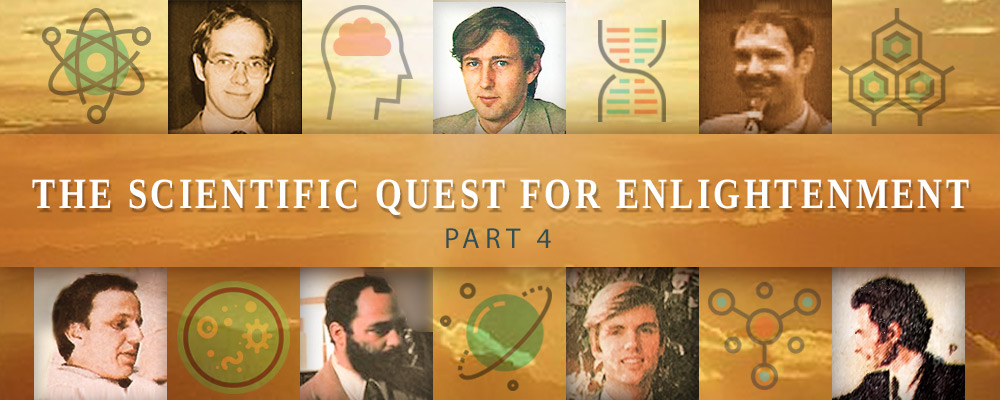
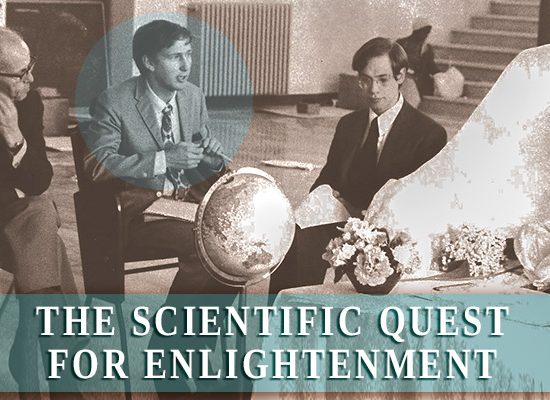


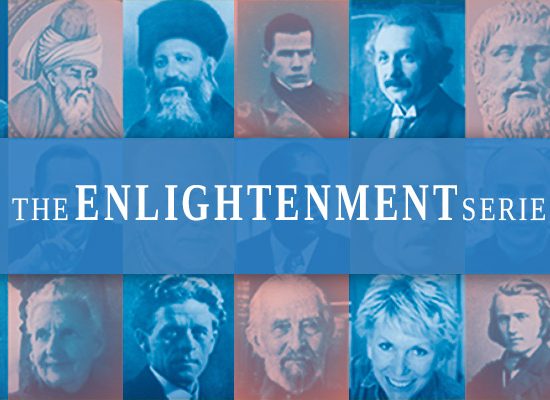
I have been practicing TM daily for 35 years and TM-Sidhis program every day since 1988. I wrote my book, and it’s about how I deal with adversity and success with equanimity thanks to TM and growing into higher states of consciousness.
Thank you Steven, Peggy, and Eric for providing examples of rising Cosmic Consciousness! Very inspiring.
So, Dr. Orme-Johnson, you left out Judaism up there. In the Talmud, the sages describe meditating, a lot like TM, using obscure names of G-d. Also, they describe “Torah” as G-d’s teaching or, you guessed it, Natural Law. Many of our patriarchs and prophets experienced supernormal activities, like not dying and going “straight to Heaven,” bringing people back to life (Elisha), surviving extreme heat (Daniel). Not to mention the communication with G-d or the absolute. Just saying.
Beautiful! Thank you Rabbi Epstein for such a nice and concise summery of parallels in Judaism. I will include this in future examples.
Thank you, sir! JGD
I must be getting old that people call me “sir”! Well, I will be 79 on Jan. 17, but I am in denial about it. I don’t feel old.
I’ve been meditating regularly since 1973, about 46 years. I’ve been pretty regular although I missed a meditation every now and then at the beginning. I haven’t missed a meditation in 40 years. Got the TM-Sidhis 20 years ago. While my life is not perfect, and it seemed like the challenges really started after learning the Sidhis, I’ve amazed myself at how calm I typically remain in the face of major challenges. My outlook is very positive and I treat everyone with respect. I feel that I’ve become the person I’ve always wanted to be and despite any outside challenges, it doesn’t matter because I’ve learned to like, love and respect myself, and for me, that’s the most important thing. I’ve also accomplished things I never thought I could do, like–don’t laugh–replace a toilet. OK, laugh, it’s cool.
I’m enjoying the comments 🙂 I guess I’d say the most predominant sensations have been the gradual pervasive happiness and grace, even in the face of great challenges, yes, more than one toilet 🙂 I guess one needs the Sidhis to get the benevolent roar. Maybe I’ll listen with more ears.
Don’t worry, a “roar” is not necessary. Subtle inner happiness and grace is a great experience.
Thank you for the description re the TM-Sidhis. For perhaps 30 years I’ve experienced a constant subtle scintillating/vibrating gold light in the whole of my perceived vision, and sometimes hop slightly with regular meditation. I haven’t had an illness in years. I feel inspired to check out more on the Sidhis–perhaps they might be the right next step. Thank you so much for this article. Peace.
Thank you, Rob, for sharing these beautiful experiences of health, expanding consciousness, and refined perception. To find out more about the TM-Sidhi program and courses near you, visit the EnjoyTM.org. Enjoy!
Thank you for the excellent article.
You’re welcome. It was fun to write.
I started TM in 1968 and the TM-Sidhis in ’78. They are the “real deal” for anyone interested in developing inner wholeness of being. Steadiness of thought, inner joy, empathy, compassion, generosity, creativity, intelligence, and wisdom have steadily increased over the years and elevated EVERY aspect of my life (personal well-being, interpersonal relations, workplace achievement, community engagement, and effectiveness in public institutions). TM and the TM-Sidhis are the most direct path to elevated consciousness and all the qualities it contains. Looking back, if I had to choose all over again, I would change a lot of things in my life but the one thing I would definitely do (for the bliss and to make it more likely to change the things that I would change) is start TM when I first heard about it and start the TM-Sidhis as soon as possible thereafter. Warm regards to all those considering this wonderful daily practice.
I’ve been a regular 2x a day TM meditator since 1971. I’d be very curious to know what others like myself might be experiencing at this stage.
I was initiated in 1970 , practiced 2x a day for about 10 years and then stopped finding it too stressful to find 2 times a day of quiet while raising a family and working parttime. I started up again about 20 years ago. I am committed to meditating 2x a day. I cannot claim to “witness”. I think I am a bit better off for doing it than not doing it. But no Cosmic Consciousness as far as I can tell. Have you learned the advanced techniques?
If TM is making your life better, then you are definitely normalizing the nervous system and on the path to CC.
Yes, I got all the advanced techniques and TM-Sidhi techniques as they came along, and they definitely speed up development of the nervous system’s ability to function at refined levels needed to support experiences of higher states of consciousness.
Thank you for your prompt response. What are the differences between TM-Sidhi techniques and the adcvanced techniques? I live in rural northeren WI and try to keep my carbon footprint low; so I do not get to checkings, group meditations or opportunities to learn techniques easily.
It is great that you are keeping a small carbon footprint!
The TM Advanced Techniques allow the mind to hover, as it were, at subtle levels of thought. This enlivens the ability of the physiology to reflect that deep transcendental level more and more in activity, speeding up witnessing and the dawning of Cosmic Consciousness.
The TM-Sidhis are a set of mental techniques that develop the ability to function and act from the level of Transcendental Consciousness. Whereas TM practice allows us to settle down to quiet levels of the mind, the TM-Sidhis train the mind to function from that level. By analogy, in weight training, a set of exercises that develop all the muscle groups (e.g. arms, legs, back) are practiced with the goal to holistically develop an integrated, healthy body. Like that, the TM-Sidhi techniques are a set of mental techniques that develop different aspects of the mind and body to function from the transcendent. The overall purpose of this is holistic integration of pure consciousness with every aspect of mind and body, giving rise to the highest level of enlightenment, Unity Consciousness.
The TM-Sidhi techniques come from the ancient Vedic scholar Patanjali’s Yoga Sutras. Maharishi explains that “sutras” means “stitches” and “yoga” means “union” or “unity.” Hence, the Yoga Sutras are “stitches of unity” that create Unity Consciousness.
I’ve been VERY HAPPILY practicing the TM technique for over 50 years, TM-Sidhis for 40 or 45. The inner continuous hum or roar gradually appeared and has been going on now for about 2 years. It can get very loud and it’s quite enjoyable. I must say life as a whole is very blissful most ALL of the time and spontaneous inner or/and outer laughter just happens often…!
I have been doing the TM and TM-Sidhis programs for decades. I experience a background silence when looking for it. I experienced a background hum or roaring sound for decades. I experience light and heat often. I was told that my pulses showed a lot of sattva.